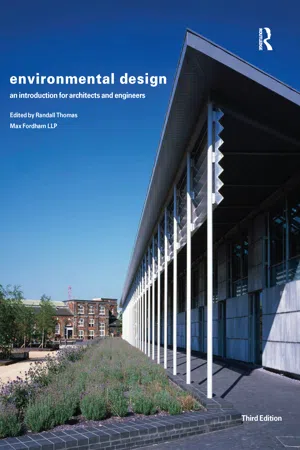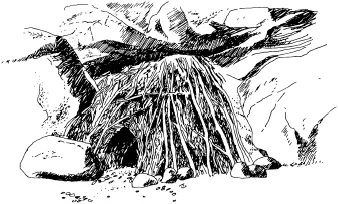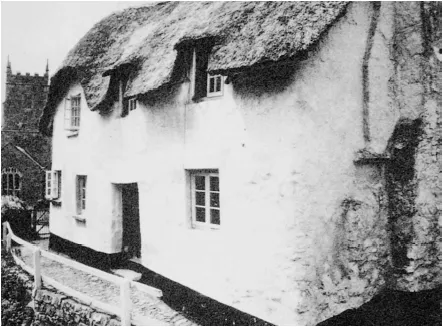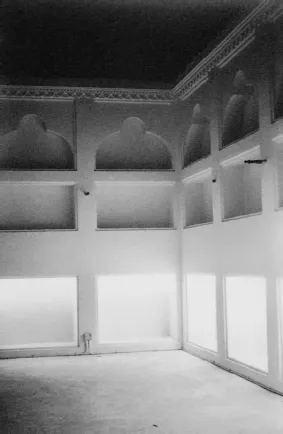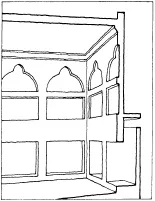![]()
Part One
![]()
1.1 Introduction
Environmental design is not new. The cold environment of 350 000 years ago led our European ancestors to build shelters under limestone cliffs (Figure 1.1). More recently, English cob cottages (Figure 1.2) and Doha homes (Figure 1.3), both built of earth, demonstrate vernacular responses to light and heat.
The cob cottage evolved to provide sufficient light (say about 100 lux) under overcast skies and to limit heat loss in the winter. The Doha home evolved to provide about the same light level in bright sunlight while protecting the interior from extreme heat. It is no coincidence that the two buildings developed to give the same light level.
The rise of science in the Renaissance led to the Industrial Revolution which has enabled environmental engineers to produce reasonably comfortable conditions in almost any building in almost any climate. Some of the most visually powerful architecture of our era has taken technology and pushed it to the limits of its capabilities. The engineering systems associated with this architecture, however, have required high-grade energy to deal with the environmental problems resulting from the building design. What we need to do now is to reduce a building's reliance on fossil fuel-derived high-grade energy yet still provide comfort inside for the occupants.
What is important in achieving this? Solar energy drives the processes we live by -photosynthesis, the carbon cycle, weather, the water cycle. It is the source of our fossil fuels and it sustains the average world temperature at about 15 °C. The light from the Sun can replace the high-grade energy used in electric lighting. One watt of natural light more than replaces three watts of primary energy used by a fluorescent light and even more if replacing wasteful tungsten light bulbs. Wind is invaluable in providing fresh air and in helping to lower summer-time temperatures.
1.1 Reconstruction of an AcheuIean hut in France.1
Our activities as a species are likely to overload our habitat. We plunder fuel reserves and convert them to carbon dioxide as we generate the energy for our immediate use. Our other chemical activities can pollute the environment, as we have seen with the depletion of ozone in the stratosphere. We must change to designing our buildings to reduce our impact on the global environment.
1.2 English cob cottage.2
In general, buildings are like many animals. In cold weather a source of energy is needed to keep them up to temperature and a strategy is required to prevent the heat inside from escaping. In bears, this is accomplished by a good coat of fur – in buildings it may be by insulation. The heat loss associated with ventilation also requires regulation and much recent work deals with better seals and control techniques.
In hot weather, when the external temperature is high, too much heat may enter the space. If this heat can be absorbed by the fabric of the building, the peak air temperature during the day will be less. If night-time ventilation is possible, the heat absorbed by the fabric of the building can be lost at night when the temperatures are lower. But if the buildings are lightweight and sealed, they are likely to overheat and a need for air-conditioning will result.
What do we need to do now?
Recently, the most significant shift in thinking is to consider the building as a whole. From this perspective we should examine how the site, form, materials and structure can be used to reduce energy consumption but maintain comfort. The importance of daylight has also become more clear. Natural light is our most important and rewarding use of solar energy. Building design should aim to provide enough light whenever the Sun is above the horizon. Of course, the dangers of glare and overheating must be avoided; therefore façade design and ventilation are key elements to a successful strategy. As part of this we need to develop economic triple-glazed windows with automatically (or easily) operated blinds to control solar radiation during the day. These blinds should be thermally insulated (or they might even be separate shutters) to reduce heat loss at night. With regard to ventilation, air quality and noise will be major design factors which, in critical situations, may lead us back to fans and simple mechanical systems.
1.3 Doha home.3
The following chapters of this book deal with these and other issues that will help us manage the transition to comfortable, healthy, well-designed, energy efficient buildings. It is based on the leading edge of current practice but it will be evident to the reader that more buildings, more monitoring and more data are needed. The book gives pointers but it is no substitute for thought – thinking about buildings has a long way to go.
Notes and references
1. Musée Régional de Préhistoire, Orgnac l'Aven, France.
2. Clifton-Taylor, A. (1972) The Pattern of English Building, Faber & Faber, London.
3. Illustration and photograph by Max Fordham.
![]()
Comfort, health and environmental physics | CHAPTER 2 |
2.1 Introduction
This chapter discusses human comfort. Part of the background for the topic is an introduction to basic scientific principles of heat transfer, the electromagnetic spectrum, light and sound and their relationship to building design. It concludes with an overview of air quality, both outdoor and indoor, and moisture issues in buildings.
2.2 Comfort and control
As an example, let us consider our own bodies, which are controlled to maintain a core temperature close to 37 °C. We function best at this temperature and variations on either side are detrimental. This temperature has evolved over a very long period under the influence of many variables.
A major factor is the need to get rid of the heat we generate as a by-product of our metabolic systems. The heat we produce varies from about 100 W at rest to about 1000 W when physically very active. A seated adult male indoors in normal conditions produces about 115 W – about 90 W of which is sensible heat and the remaining 25 W is latent heat. Sensible heat is that which we can ‘sense’ or feel; it is detectable through changes in temperature. Latent heat is the heat taken up or released at a fixed temperature during a change of phase, e.g. from a liquid to a gas.
Heat loss from the body occurs in several ways. Sensible heat loss from the skin or outer clothing surface occurs by convection and radiation, and there is a sensible heat loss during respiration. Latent heat loss occurs through the evaporation of sweat, and the evaporation of moisture during respiration. The rate of heat loss from the body will depend on the air temperature, the mean radiant temperature of the surroundings (for example, in a room this is the mean of the temperatures of the walls, glazing, ceiling and floor), the...
